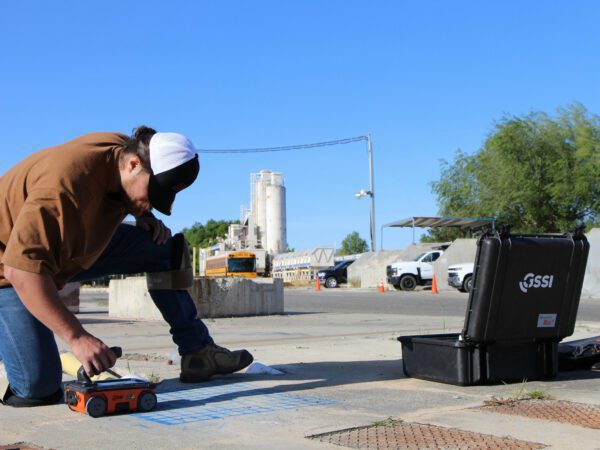Concrete Scanning: An Important Action Towards Making Certain Architectural Integrity and Safety And Security
In the world of building and construction and facilities upkeep, the relevance of concrete scanning can not be overstated. This precise procedure holds the crucial to revealing possible dangers concealed beneath the surface area of apparently strong structures. By using advanced technology and methods, concrete scanning serves as an essential device in making sure that the honesty and safety and security of bridges and structures are maintained to the highest requirements. Nevertheless, beyond its surface-level ramifications, the role of concrete scanning extends far much deeper than satisfies the eye.
Value of Concrete Scanning
Concrete scanning plays an important role in ensuring the architectural honesty and safety and security of structures and facilities projects. By using sophisticated innovations such as ground-penetrating radar (GPR) and electromagnetic induction, experts can non-destructively check concrete frameworks to find possible defects, voids, embedded things, and reinforcement format. This procedure makes it possible for very early discovery of anomalies that can compromise the security of a framework, protecting against pricey problems and making certain the security of owners.
Before drilling, reducing, or coring right into concrete, scanning assists determine the accurate locations of rebar, post-tension cords, and other ingrained aspects, minimizing the danger of unexpected hits that could lead to structural weak points. Furthermore, concrete scanning aids in quality control by validating the thickness of concrete covers and finding any type of discrepancies that might impact the overall durability of the framework.
Modern Technology for Concrete Examination

Benefits of Very Early Detection
Timely detection of structural concerns can dramatically minimize threats and make certain the longevity of building jobs. By determining potential troubles early on in the building and construction process, stakeholders can take positive steps to resolve issues prior to they rise right into bigger and much more expensive issues. Among the vital benefits of early detection is the prevention of structural failures, which can present severe safety and security hazards and lead to job hold-ups and financial losses.
Furthermore, very early detection permits timely repair services and upkeep, which can aid expand the lifespan of the structure. By dealing with concerns promptly, construction groups can prevent pricey fixings and even the need for early substitute of structural elements. This aggressive approach not just conserves time and money but likewise enhances the overall safety and security and longevity of the building task.
In addition, early discovery can boost job planning and decision-making by providing stakeholders with beneficial insights right into the problem of the structure. Equipped with this information, task managers can make enlightened options concerning building and construction materials, approaches, and timelines, causing more effective and efficient job outcomes.
Making Sure Structural Security
Guaranteeing the architectural stability of a construction job is paramount to its safety and security and durability. Structural stability go to this website describes the ability of a structure or facilities to maintain its kind and function under environmental problems and various loads. To achieve this, thorough analysis and tracking of the structure are crucial. Concrete scanning plays a vital function in making certain structural security by discovering prospective concerns such as spaces, delamination, or support corrosion that could jeopardize the stability of the framework with time.
By using sophisticated scanning modern technologies like ground-penetrating radar (GPR) and electro-magnetic induction, building and construction specialists can non-invasively inspect concrete structures to determine areas of worry under the surface. This positive technique enables for the early discovery of defects or weak points, allowing timely repair work or reinforcement to stop architectural failings.
Routine concrete scanning throughout various building phases and throughout the life cycle of a structure can help keep its security, reduce risks, and ensure the safety and security of passengers. By focusing on structural security through concrete scanning, building and construction jobs can boost their durability and longevity, inevitably adding to greater security and long life.

Stopping Important Failures
Carrying out regular assessments, such as concrete scanning, can reveal surprise issues like voids, fractures, or rust that can compromise the stability of a framework. By making use of sophisticated scanning modern technologies like Ground Permeating Radar (GPR) or Concrete X-ray, designers can non-destructively evaluate the problem of concrete and determine weak points that need support or repair work.

Verdict
In final thought, concrete scanning plays a critical role in guaranteeing structural stability and security by using innovative modern technology for very early discovery of prospective problems. This positive technique aids protect against essential failings and makes certain the stability of structures. It is necessary to prioritize concrete examination as a conventional technique to shield the longevity and security of structures and framework.
Concrete scanning plays an important duty in guaranteeing the structural integrity and safety and security of buildings and infrastructure jobs. Furthermore, concrete scanning aids in high quality control by validating the thickness of concrete covers and identifying any inconsistencies that may affect the total longevity of the structure. Concrete scanning plays an essential duty in making certain architectural security by discovering potential concerns such as spaces, delamination, or support rust that could compromise the honesty of the framework over time.

In conclusion, concrete scanning plays a crucial function in guaranteeing structural integrity and safety by using sophisticated innovation for early detection of prospective issues.